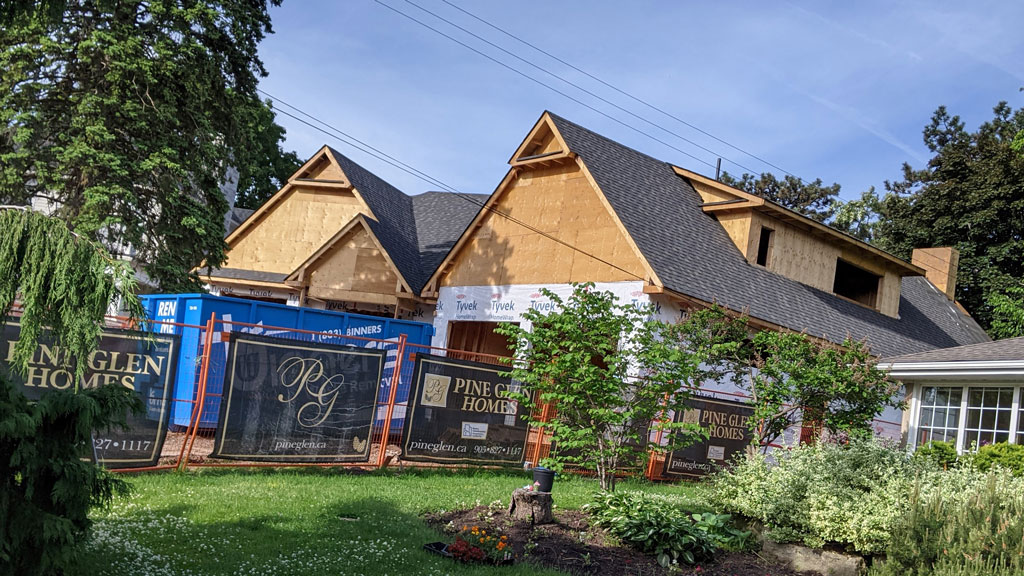The worst season of labour disruption in Ontario’s residential construction sector in a generation appears to be abating with six of nine strikes now settled and another trade slated to vote on a tentative deal June 2.
The Victoria Day weekend was the turning point, said Andrew Pariser, vice-president of the Residential Construction Council of Ontario (RESCON) and current chair of the Ontario Residential Council of Construction Associations.
“Within the first week of May, we pretty much had wall-to-wall shutdowns,” said Pariser. But “by Tuesday after the long weekend, we had five groups back.”
According to a recent RESCON report, two strikes involving LIUNA 183 members working in low-rise framing and self-levelling respectively ended May 24 after the workers ratified deals.
I think the industry is going to get back to working together, we’re going to get back to building houses for people,
—Andrew Pariser
Residential Construction Council of Ontario
��
That same day, highrise formworkers from LIUNA 183 and LIUNA 1059 as well as International Union of Operating Engineers (IUOE) Local 793 called off their work stoppage after voting to accept a proposed new contract and two days later LIUNA members working provincewide in demolition did the same. ��
Also on May 24, operating engineers called off a strike that affected both the residential and ICI sectors.
Railing workers in LIUNA had signed a deal May 9. With the six deals now done, “I think the industry is going to get back to working together, we’re going to get back to building houses for people in Ontario,” said Pariser.
As documented by RESCON, drywallers in Carpenters’ Local 675 remain on strike and striking high- and low-rise tilers represented by LIUNA will be voting to ratify a deal June 2. The third trade still striking is hardwood and carpet installers from LIUNA 183, with individual contractors affected by sporadic work stoppages in cases where deals have not been signed.
“Obviously we need tile to ratify on Thursday (June 2),” said Pariser. “We need drywall to end. We need some of those flooring situations to end.”
Negotiators for LIUNA did not respond to requests for comment. Mark Lewis, general counsel for the Carpenters’ District Council of Ontario, stated June 1, “As of today there is no progress.”
IUOE Local 793 business manager Mike Gallagher said strikes are a weapon of last resort. The ICI and residential strikes occurred, he said, “due to pandemic fatigue and inflation leading to extraordinary frustration of our membership.”
In future, Gallagher said, both sides must find a way to address issues prior to bargaining before they become impossible to solve in the short time frame within bargaining, as part of broader continuing dialogue.
“I’m optimistic that we can do that and make changes where necessary,” he said.
By legislation the window for strikes in Ontario’s residential construction sector is 46 days, starting from May 1, after which striking workers must return to work and negotiations go to arbitration. From the mid-‘90s, Pariser recounted, when provincial legislation regulating the residential sector took effect, to 2016, there was a “phenomenal stretch” in which there were virtually no strikes. In 2016 there were six strikes and the disruption was “fairly significant.” Then 2019 was another good round, he said, with just a couple of strikes. ��
“And obviously this has been a very tough round.”
David Wilkes, CEO of the Building Industry and Land Development Association, stated recently the strikes along with unpredictability in construction costs and supply-chain disruptions “are expected to impact housing supply in the GTA in the coming months.”
Pariser suggested the building sector is resilient and that the recent labour breakthroughs might mean the longer-term impacts may not be significant.
“I’m actually pretty excited and pretty positive right now,” he said.
Railing, highrise and low-rise forming, operating engineers, self-levelling, high- and low-rise tile and the floorers all went out May 2, drywall struck on May 9 and demolition walked May 11.
Some projects were initially affected minimally, such as those where drywall was already installed, Pariser said.
“If you were at the framing stage or the forming stage your project obviously stopped,” he said. “Once framing went out, when highrise forming went out, when drywall went out, when tile went out, there were a lot of houses or condos not getting worked on.
“I think we’re in a very good position to bounce back. I think what we’re seeing now that the strikes have ended, people have come back, wanting to get back to working together.”
Direct employees of RESCON in low-rise and highrise got 12 per cent raises over three years which Pariser said fit within the pattern in the sector.
“When you look at the compensation packages, I think we’ve recognized the value that labour brings. We’ve certainly taken care of inflation big time. Now we need to get back to working together to get back to building, that is what Ontario needs and wants.”
Follow the author on Twitter .











Recent Comments
comments for this post are closed